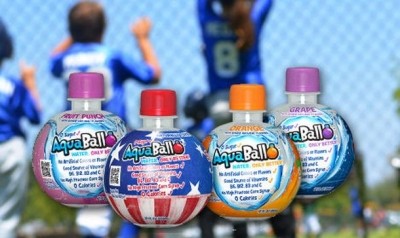'Artificial' preservatives are falling out of favor, but what are the alternatives?

And as more high-profile players from Panera to Chobani focus on spurning unpronounceable substances in their ad campaigns, consumers are encouraged to regard scores of ingredients that are considered safe and legal by the FDA as at best, unnecessary, and at worst, unsafe.
Indeed, a 2015 poll of more than 4,200 US consumers conducted by CivicScience revealed that Americans believe that ‘preservatives / chemicals’ [which were not defined in the question] are significantly more harmful to their heath than added sugar, saturated fat and sodium.
And as a result, EDTA, TBHQ, BHA, BHT, calcium sorbate, calcium propionate, potassium benzoate, potassium sorbate, sodium benzoate, sorbic acid et al are increasingly being added to the ‘unacceptable ingredients’ lists of retailers, foodservice companies and food manufacturers, prompting manufacturers to seek ‘natural’ alternatives.
There are no silver bullets
In some cases, technologies such as vacuum packing, aseptic packaging or high-pressure-processing (HPP) have enabled companies to avoid preservatives altogether in everything from beverages to hummus.
In other applications, there has been a shift towards natural antimicrobials and antioxidants, says DuPont Nutrition & Health regional product manager John Wyatt: “We look at these lists of ‘unacceptable ingredients’ with a great deal of interest as they are barometers of what the consuming public is thinking and where the industry is going.
“In most cases we can offer clean label alternatives, but there are cost implications, and sometimes you might need to make processing changes, so there are no silver bullets.”
Bakery products
When it comes to tackling mold in baked goods, many manufacturers are looking to replace calcium propionate, said Wyatt. “We’ve got two [natural] alternatives that have become quite successful.
“One is a whole fraction fermentate – MicroGARD 910 [listed on the ingredients list as ‘cultured wheat flour’ or ‘cultured wheat starch’], where we take wheat starch and do a fermentation, and the byproducts have antimicrobial properties, so we spray dry them and make it available to bakers to add to flour and other dry ingredients.
“The other is Natamax B Plus [listed on the ingredients list as ‘natamycin’ – a name Wyatt acknowledges not all consumers instantly recognize as ‘natural’], we have patents around the use of this in bread, we’ve developed a version that’s soluble in water and can be sprayed onto the surface of bread. Although it’s more expensive than calcium propionate, it’s becoming more popular in bakery now as it’s more effective.”
In packaged tortillas – where sorbates are often combined with fumaric acid to tackle spoilage – he said, “We can spray the surface with Natamax, but you’d also need an antimicrobial such as a MicroGARD product for the interior, so you’d need a combination of products [in a ‘natural’ intervention].”
Dairy products
In cultured dairy products, meanwhile, manufacturers are mainly looking for mold prevention, said Wyatt. “For things like shredded cheese, Natamax is very popular, whereas for cottage cheese, say, MicroGARD fermentates can work well. The dairy versions are listed as ‘cultured skim milk’ on the label, so they look like they belong on a dairy label, which customers really like.”
For yogurts, he said, “you can use MicroGARD whole fraction fermentates/cultured skim milk, but you can also use DuPont’s HoldBac cultures in conjunction with acidifying cultures that will produce the metabolites that will prevent or delay the growth of mold and that can happen during the culturing process, and it’s just on the label as cultures.”
Chilled deli meats
In ready-to-eat cooked meats, he said, “people often want up to 90 days in the refrigerator without spoilage, and they are worried about pathogens such as Listeria monocytogenes, so historically manufacturers have used combinations of lactate and diacetate.
“Our approach has been to use our whole fraction fermentates and combine them with themselves or in some cases buffered vinegar and that has been really effective.”
Turkey products, which have always been challenging when it comes to Listeria, he said, have also responded well to DuPont’s natural interventions, which can be used to replace lactates and diacetates and increase shelf life, he said.
Hummus
For hummus, a rapidly-growing category, historic interventions have included using vinegar to drop the pH, or potassium sorbate, sodium benzoate, or potassium benzoate to keep spoilage at bay, said Wyatt, but there is particular pressure to keep labels clean given hummus is seen as a ‘natural’ product.
“Our clean label fermentates are very popular here – some for gram positive bacteria, some for yeasts and mold, and products such as BioViaYM10 [cultured dextrose, green tea extract, and mustard essential oil] are very effective, so much so we can sometimes deliver a longer shelf life than from using traditional chemical preservatives.”
Fats and oils
While the use of natural antioxidants such as rosemary extract or green tea extract in food is not new, DuPont has found that blending these with other natural ingredients such as chamomile or acerola can be even more effective in tackling oxidation and preserving freshness in products such as margarines and salad dressings, said Wyatt.
“We’ve found that a blend of rosemary and chamomile works really well for replacing EDTA at pretty low levels, so the cost in use is not very high.”
*Click HERE to see the Mintel data.















